WHAT TO SEE IN SANTANDER
Santander, the capital of Cantabria, is a small city located in one of the most beautiful areas in Northern Spain. Surrounded by the Bay of Biscay, exploring and enjoying the city only requires a little bit of your time. Whether in winter, witnessing the contrast of snow-capped mountains against the blue waters of the bay, or during the storms crashing waves against the Mouro lighthouse, or in the summer, relaxing on its beaches, enjoying the mild climate, strolling along its seaside promenades, or extending your evenings in its lively squares, Santander reveals itself as a gem in the north that you should not miss.
The history of Santander is marked by a before and after the 1941 fire, which practically destroyed the city’s central area.
Here are some locations and urban landscapes that you should not miss during your stay, along with some information gathered from our personal knowledge:
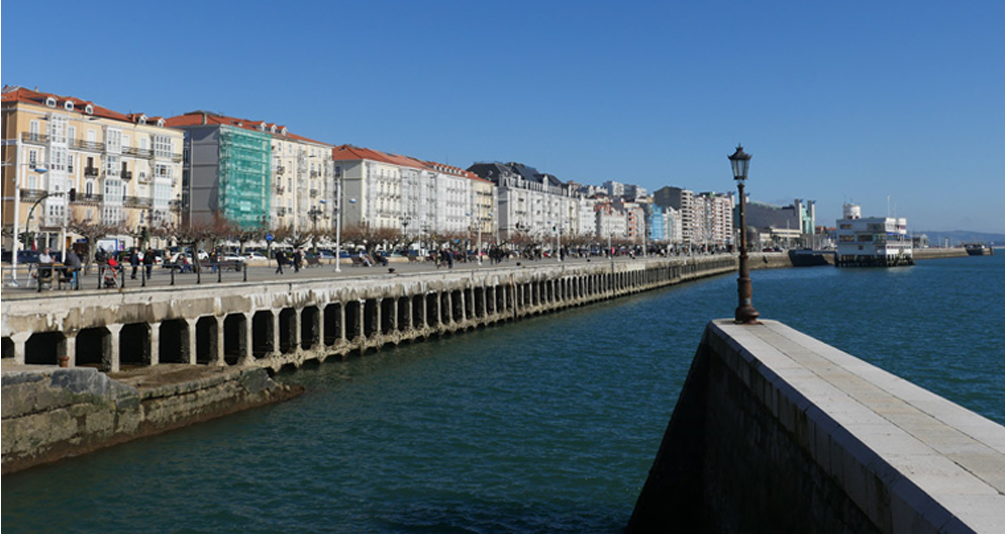
Bay of Santander
Santander belongs to the exclusive club of the most beautiful bays in the world. From the Maritime Station to the Peligros Beach, the seaside promenade runs along the bay, including the Jardines de Pereda, the Centro Botín, Paseo de Pereda, Puertochico, Duna de Zaera, Dique de Gamazo, and the Maritime Museum of Cantabria.
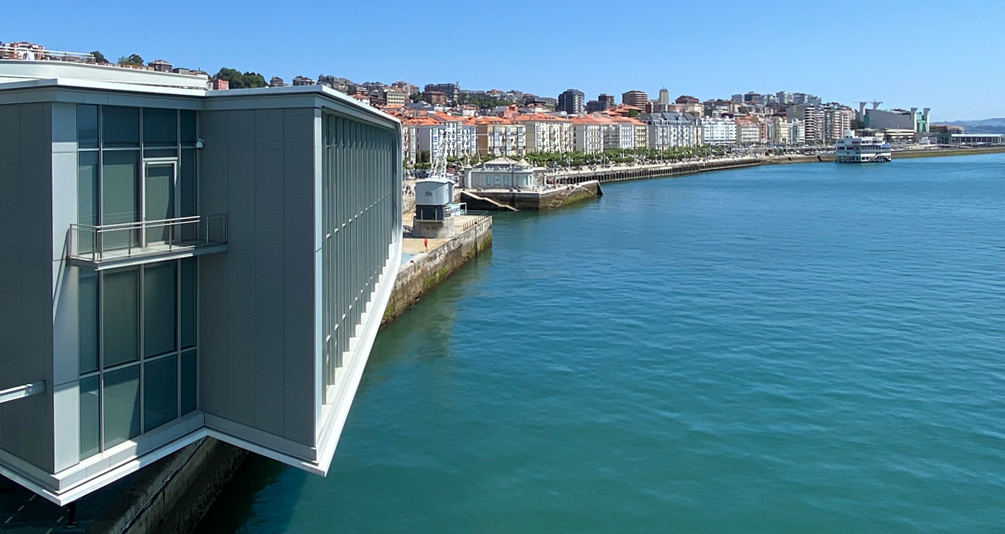

Bay of Santander
Santander belongs to the exclusive club of the most beautiful bays in the world. From the Maritime Station to the Peligros Beach, the seaside promenade runs along the bay, including the Jardines de Pereda, the Centro Botín, Paseo de Pereda, Puertochico, Duna de Zaera, Dique de Gamazo, and the Maritime Museum of Cantabria.
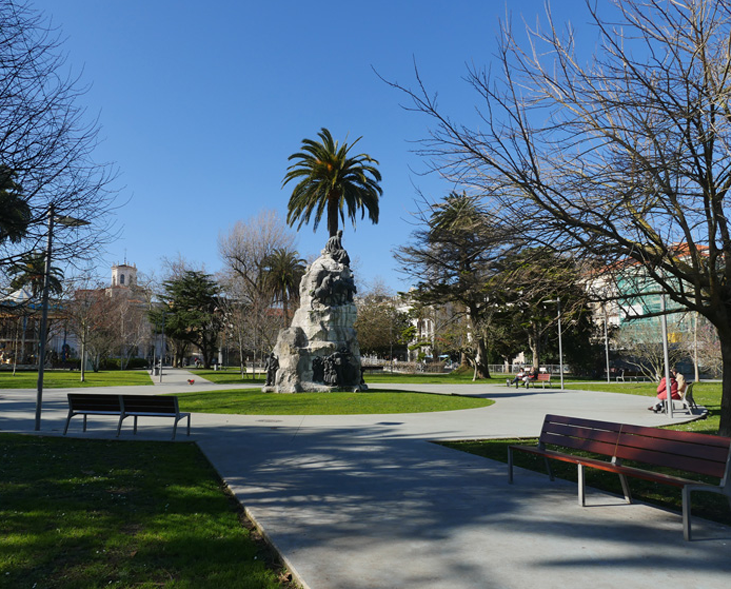
Jardines de Pereda
This is a public park in the city, situated on land reclaimed from the sea, which was used as a port in 1805 and officially opened in 1905 during an Arts and Industries Exhibition. It is a very popular space due to its central location and proximity to the seaside promenade, as well as the Centro Botín. The gardens were dedicated to the Cantabrian novelist José María de Pereda. The sculpture of Pereda, created by Lorenzo Coullaut Valera, is a prominent feature, and the engravings surrounding Pereda’s bust depict scenes from his works.
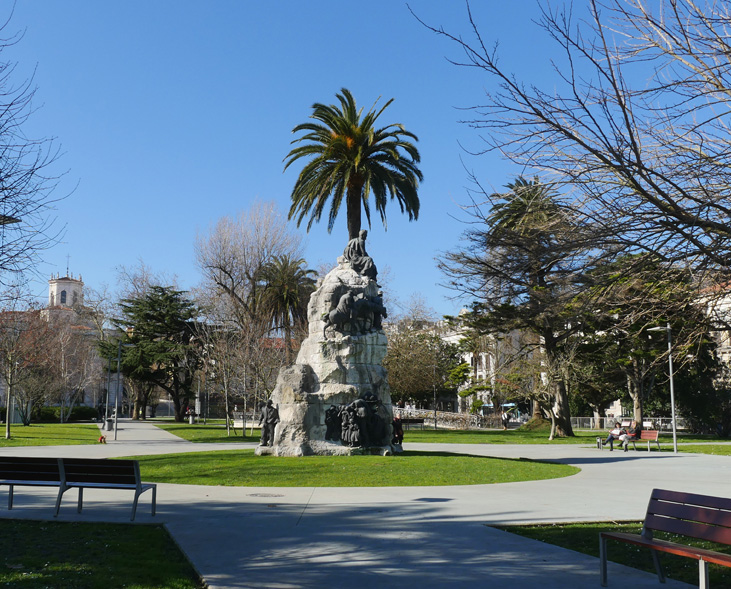
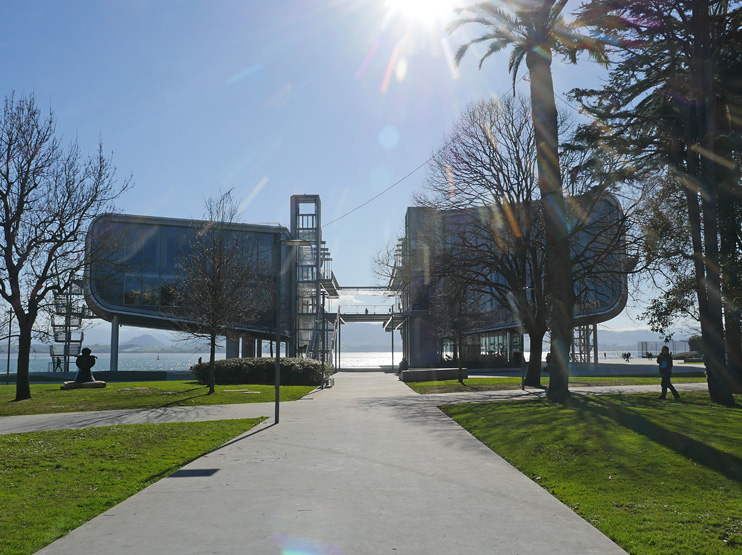
Center Botín
The Center Botín is an art center located in the city and is part of the Botín Foundation. The building was designed by the architect Renzo Piano and was inaugurated on June 23, 2017. It consists of two volumes of different sizes supported by columns and partially suspended over the sea, connected by a structure of spaces and walkways as the main distributor. The western volume is dedicated to art, featuring a 2,500 square meter exhibition hall; its glass-bottomed lower level houses commercial and dining areas. The smaller eastern volume is used for educational activities and features a large terrace with views of the Bay of Santander and a covered plaza on the ground floor with 950 square meters.
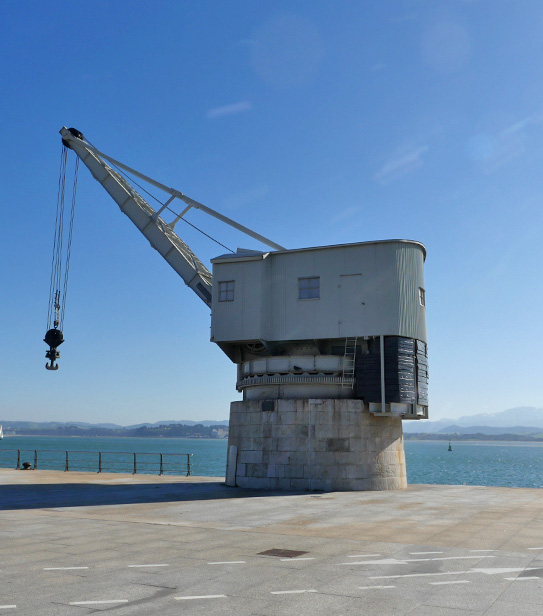
El Muelle
A walk along the dock immerses you in the essence of Santander. Discover the Grúa de Piedra (Stone Crane), the Palacete del Embarcadero, Los Raqueros, the sculpture in tribute to the poet José Hierro, or the building of the Real Club Marítimo. The Grúa de Piedra is an old crane that served the port from 1900 until the end of the 20th century, used for loading and unloading merchant ships that docked nearby.
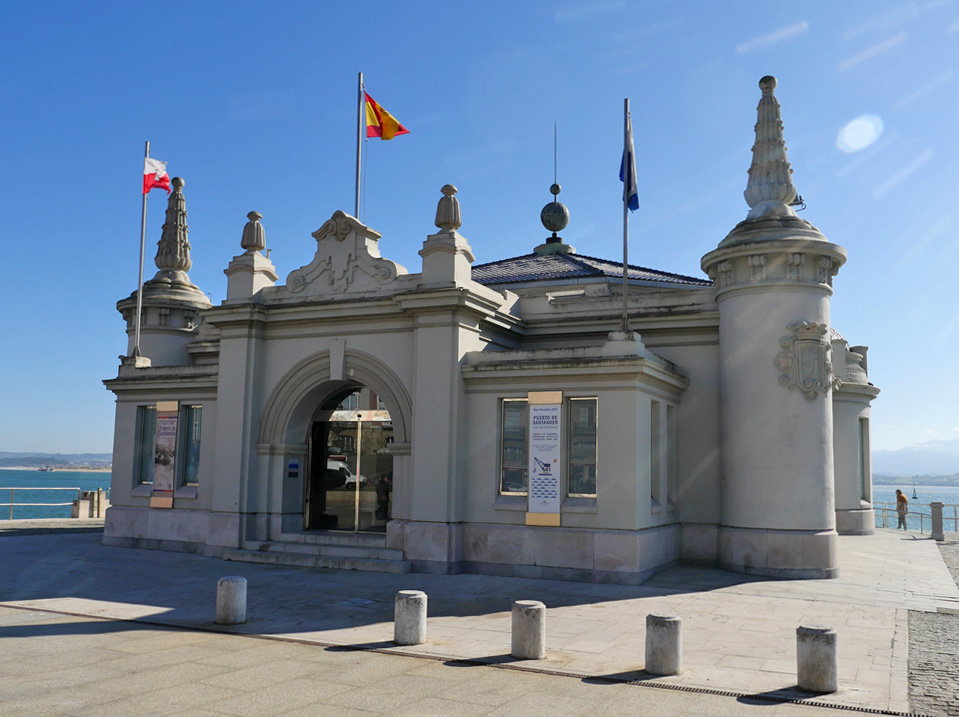
El Palacete del embarcadero
Designed by Javier González de Riancho, with a portico facing the sea and angular turrets, this building was planned in 1920 and completed in 1932. It initially served as a passenger station, later used as a headquarters for the Civil Guard, and since its reopening in 1985, it has been used for exhibitions and conferences. It is owned by the Port Authority and is one of the spaces made available by the Port of Santander to promote and disseminate maritime and port heritage. It is dedicated to both its own exhibitions and traveling exhibitions.
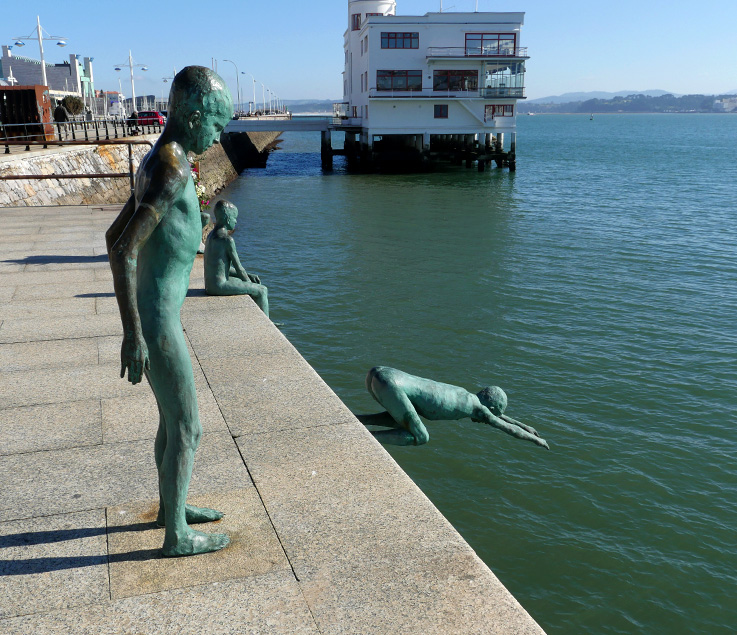
Monuments to the Raqueros
The sculptures in this area pay tribute to the “raqueros,” who were poor children who collected items from the sea to earn a living. These monuments commemorate their hard work and contribution to the city.
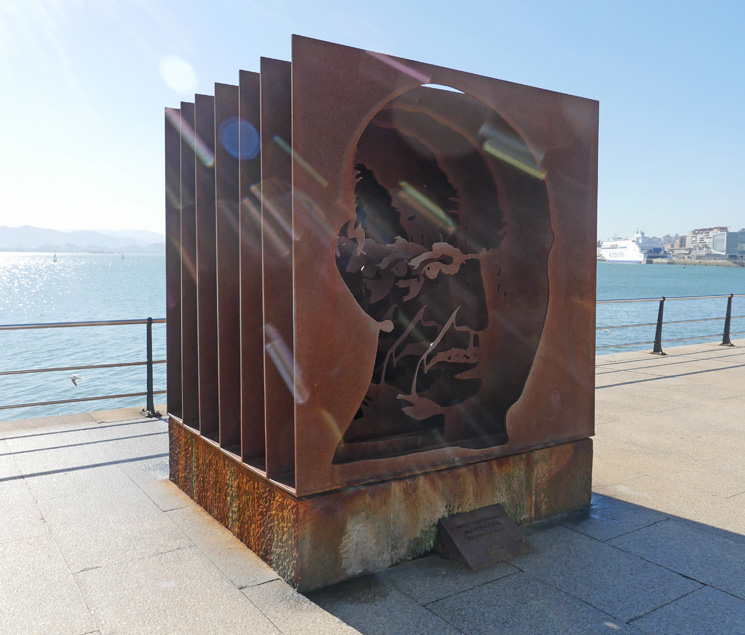
José Hierro Sculpture
The sculpture dedicated to José Hierro, a renowned poet, is located on the city’s waterfront. It honors his connection to the sea and his deep ties with the city.
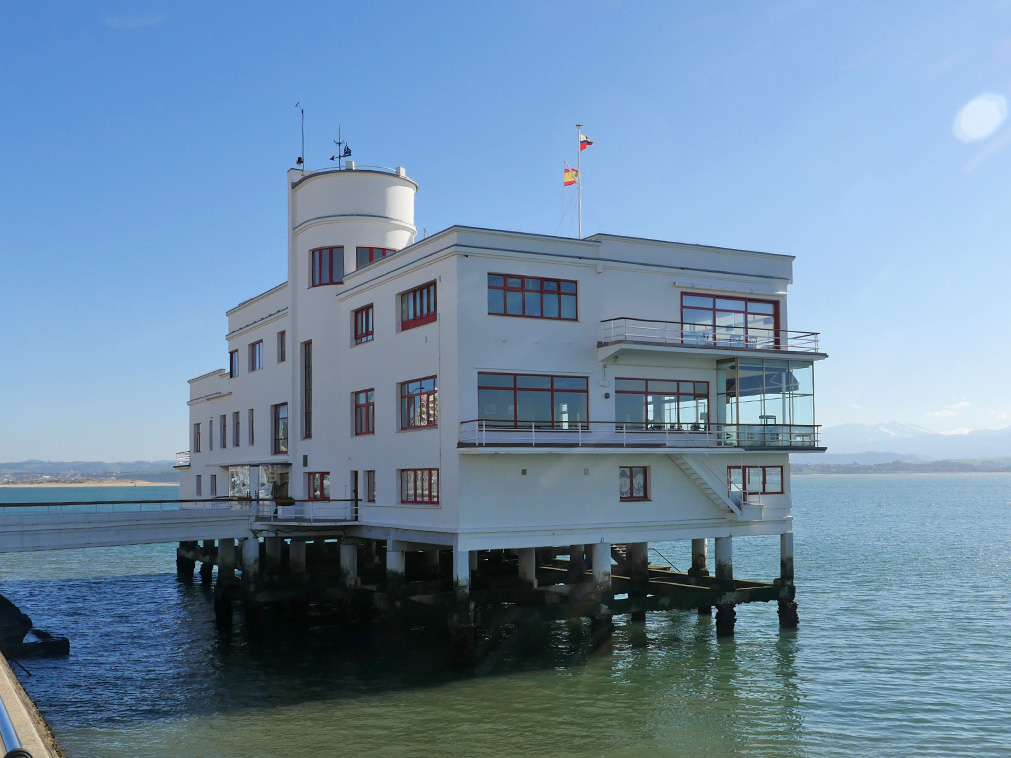
Real Club Marítimo
The Real Club Marítimo de Santander (RCMS) was founded on October 13, 1927, becoming the second yacht club in the city. It was a splinter from the Real Club de Regatas de Santander, which had been founded in 1870. The support of its honorary president, King Alfonso XIII, who participated in the club’s social and sporting activities during his summer stays in the Cantabrian Sea, gave a strong boost to the institution, which quickly became the nautical reference in Santander. Its headquarters were designed by architect Gonzalo Bringas, representing one of the examples of Bauhaus architecture in Santander.
Paseo de Pereda
It is an extensive street in the city. Located in the urban center, it hosts a long promenade parallel to the waterfront and reaches Puertochico. Along its length, you can admire the entire bay of Santander.
The 1941 fire did not affect this central thoroughfare, making it one of the oldest in the city. It forms a set of buildings ranging from the late 18th century to the early 20th century. A few years ago, it was declared an Artistic-Historical Ensemble.
In the 19th century, what is now the Paseo de Pereda was used as merchant docks, and the ground floors of the buildings were occupied by warehouses, shipowners, and merchants. The Paseo de Pereda is home to some of the most emblematic and beautiful buildings in the city, such as the Palacio de la Compañía Transatlántica Española, which was intended to be a hotel in the 19th century, although its original purpose was never realized.
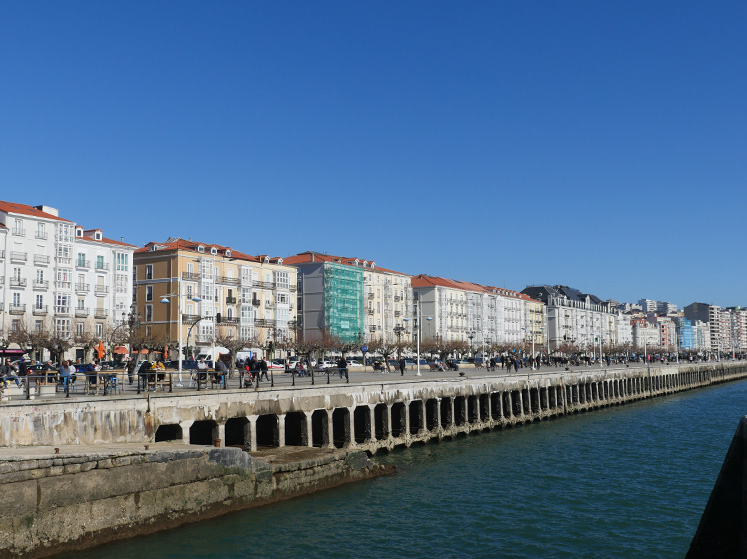
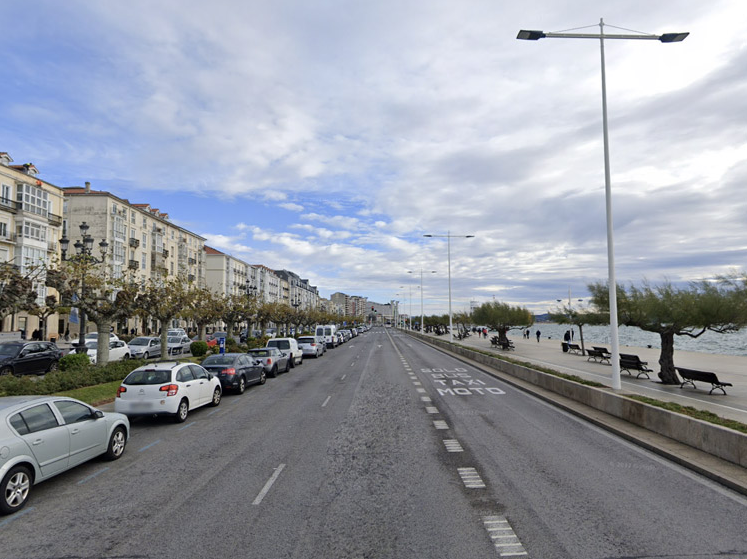
Paseo de Paredo
It is an extensive street in the city. Located in the urban center, it hosts a long promenade parallel to the waterfront and reaches Puertochico. Along its length, you can admire the entire bay of Santander.
The 1941 fire did not affect this central thoroughfare, making it one of the oldest in the city. It forms a set of buildings ranging from the late 18th century to the early 20th century. A few years ago, it was declared an Artistic-Historical Ensemble.
In the 19th century, what is now the Paseo de Pereda was used as merchant docks, and the ground floors of the buildings were occupied by warehouses, shipowners, and merchants. The Paseo de Pereda is home to some of the most emblematic and beautiful buildings in the city, such as the Palacio de la Compañía Transatlántica Española, which was intended to be a hotel in the 19th century, although its original purpose was never realized.


Paseo de Paredo
It is an extensive street in the city. Located in the urban center, it hosts a long promenade parallel to the waterfront and reaches Puertochico. Along its length, you can admire the entire bay of Santander.
The 1941 fire did not affect this central thoroughfare, making it one of the oldest in the city. It forms a set of buildings ranging from the late 18th century to the early 20th century. A few years ago, it was declared an Artistic-Historical Ensemble.
In the 19th century, what is now the Paseo de Pereda was used as merchant docks, and the ground floors of the buildings were occupied by warehouses, shipowners, and merchants. The Paseo de Pereda is home to some of the most emblematic and beautiful buildings in the city, such as the Palacio de la Compañía Transatlántica Española, which was intended to be a hotel in the 19th century, although its original purpose was never realized.
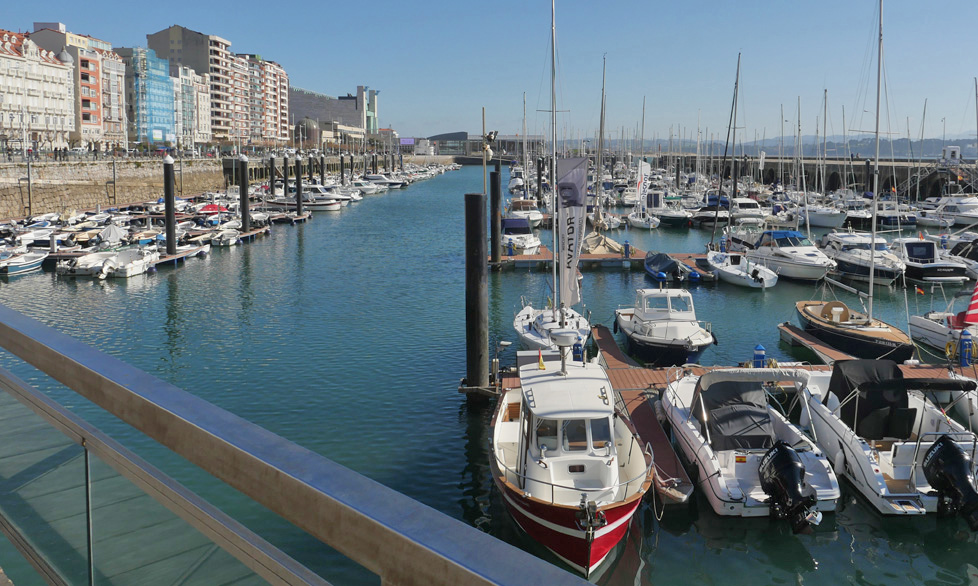
Puerto Chico
It is a neighborhood in the city formed by a group of streets in the vicinity of the dock of the same name. It is mainly composed of Puertochico Square (officially named Matías Montero Square), a section of Hernán Cortés Street, Castelar, Peña Herbosa, Juan de la Cosa, Bonifaz, Casimiro Sainz, Reina Victoria (the most upscale part of Puertochico), Canalejas, and Tetuán. These streets were mostly the former fishing population’s settlement before they relocated to the Fishing District.
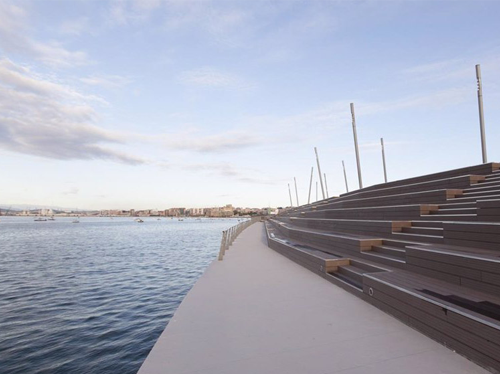
Dune of Zaera
Next to the CAR (High-Performance Center) for sailing, where renowned Cantabrian sailors like Antonio Gorostegui, Alejandro Abascal, Luis López-Alonso, José María Torcida, Toño Piris, Pachi Rivero, Berta Betanzos, or Santiago López-Vázquez, among many others, trained, you can find the Duna de Zaera. A multi-purpose building named after its designer. The Duna, as it’s popularly known, houses lightweight sailboats inside, and its stands overlooking the bay serve as an impromptu balcony that attracts onlookers who enjoy its extraordinary views.
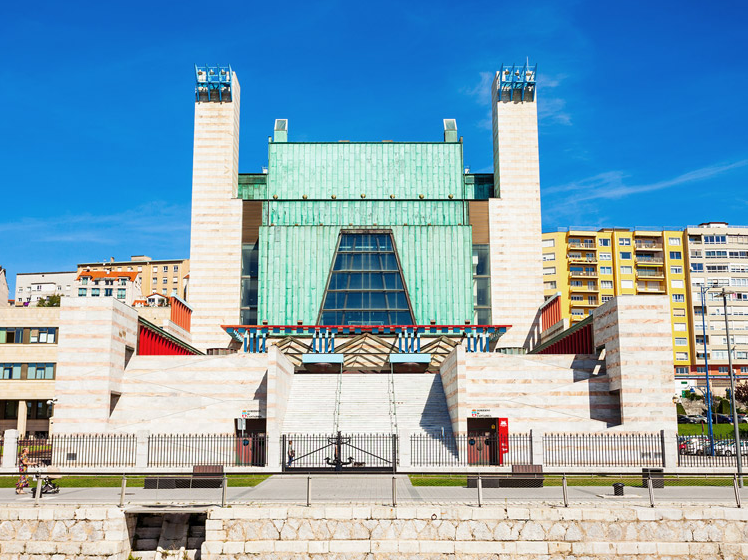
Palacio de Festivales
Behind the Duna de Zaera, you’ll find the Palacio de Festivales, where every year in August, the International Festival of Santander takes place. It was in 1952, thanks to the efforts of Ataúlfo Argenta and the festival’s first director, José Manuel Riancho, that it was established in the Porticada area. During the day, it serves as a marketplace, but at night, it transforms into a magical and unique stage where some of the greatest artists of the 20th century in music, dance, and theater have performed. It was the centerpiece of the region’s cultural offerings. On August 30, 1990, with the participation of the Norwegian Chamber Orchestra and Mstislav Rostropovich, the era of Plaza Porticada came to a close, and the Palacio de Festivales took over from 1991. Thanks to this new scenic setting, it has been able to expand its artistic offerings, introducing opera and major ballet performances into its program.
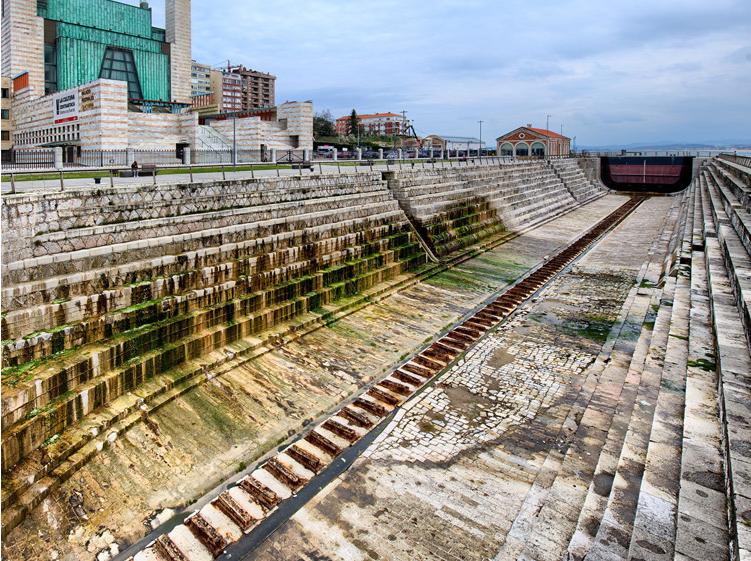
Dique de Gamazo
Behind it is the Dique de Gamazo, which began construction in the late 19th century, precisely in 1884, due to the increasing port and trade activity of the time. This growth had been ongoing for over a century and had forced the city to make expansions and improvements to the port facilities. It was completed in 1908, along with all the necessary port infrastructure for loading and unloading goods, maintenance workshops, ship repairs, etc. Currently not in use, it is well worth a visit to admire this 19th-century engineering marvel.
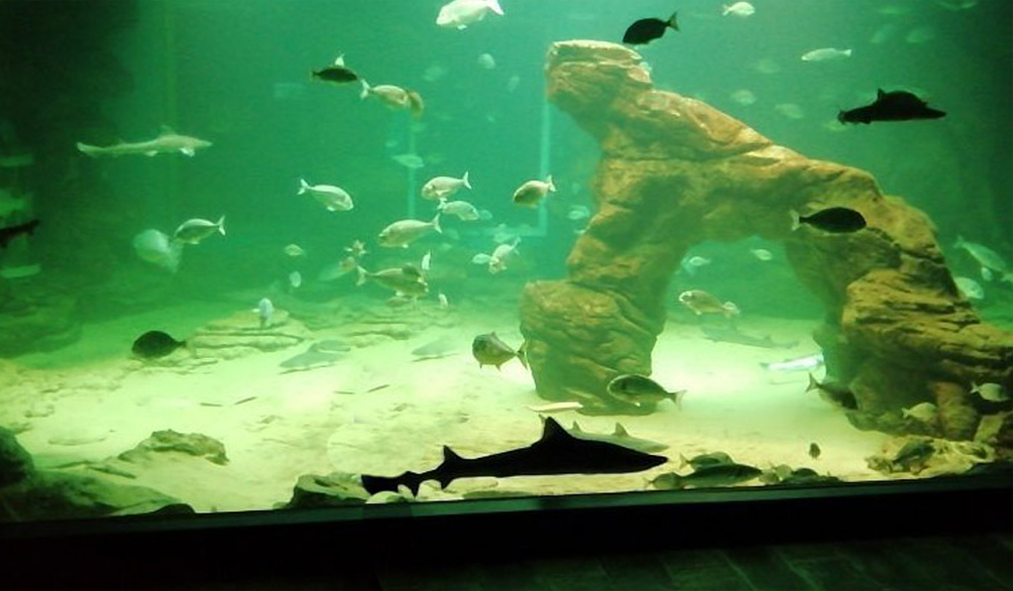
Maritime Museum of the Cantabrian Sea
The MMC is a museum and aquarium dedicated to the dissemination of maritime heritage on the edge of the bay. Its collections, one of the most important and comprehensive in the country, allow for a comprehensive approach to marine biodiversity and the various forms of human interaction with the Cantabrian Sea over the centuries and from multiple perspectives. Its collections began to take shape in the 18th century, later enriched by illustrious groups such as the Institución Libre de Enseñanza, the Nautical School of Santander, the Museum of the Royal Shipyard of Guarnizo, the Spanish Institute of Oceanography, and the Center for Montañeses Studies. Currently, the museum has an exhibition program structured in four major sections:
– Life at sea.
– Fishermen and fisheries.
– The Cantabrian Sea and the sea in history.
– Technological advances in facing the sea.
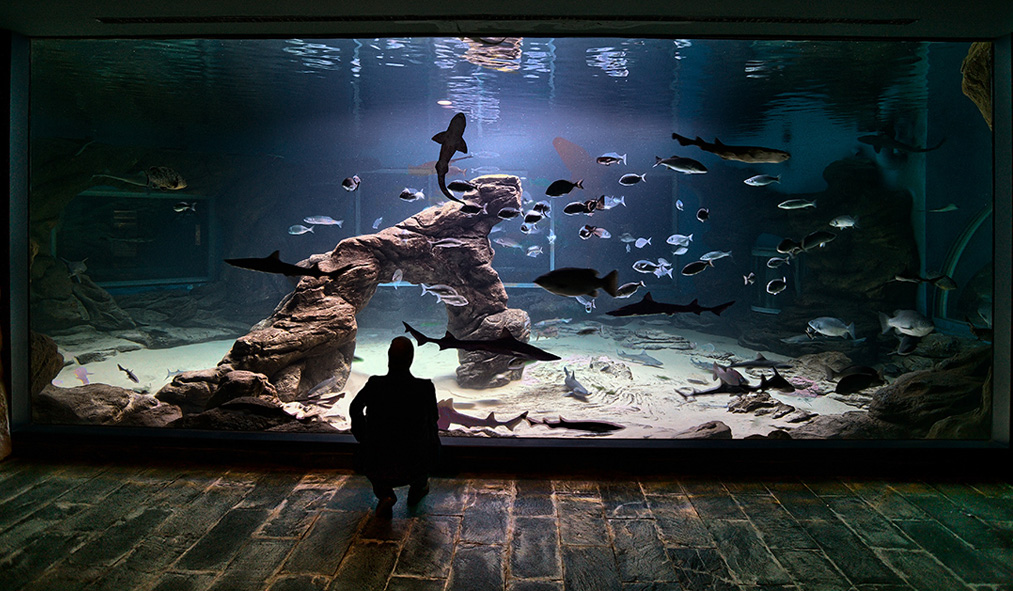
Maritime Museum of the Cantabrian Sea
The MMC is a museum and aquarium dedicated to the dissemination of maritime heritage on the edge of the bay. Its collections, one of the most important and comprehensive in the country, allow for a comprehensive approach to marine biodiversity and the various forms of human interaction with the Cantabrian Sea over the centuries and from multiple perspectives. Its collections began to take shape in the 18th century, later enriched by illustrious groups such as the Institución Libre de Enseñanza, the Nautical School of Santander, the Museum of the Royal Shipyard of Guarnizo, the Spanish Institute of Oceanography, and the Center for Montañeses Studies. Currently, the museum has an exhibition program structured in four major sections:
– Life at sea.
– Fishermen and fisheries.
– The Cantabrian Sea and the sea in history.
– Technological advances in facing the sea.– La vida en la mar.
– Pescadores y pesquerías.
– El Cantábrico y la mar en la historia.
– Vanguardia tecnológica frente a la mar.
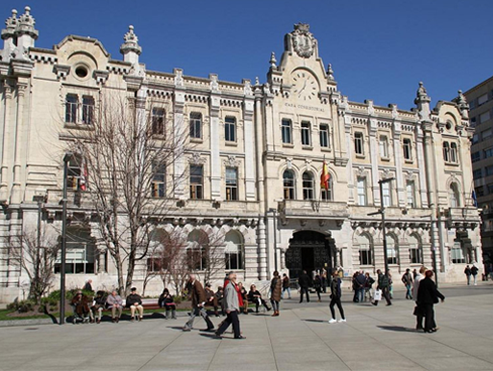
The City Hall and its surroundings.
An interesting visit, without a doubt, is to stroll near the City Hall and its surroundings. Here, you can find picturesque places such as the Plaza de la Esperanza, the central food market of the city, where we recommend visiting the fish market. You’ll be amazed by the fresh produce and seafood available here. Daily, fresh Cantabrian fish, seafood, and other sea delicacies are traded. The adjacent streets, such as Juan de Herrera, San Francisco, Calvo Sotelo, Rualasal, etc., are the city’s commercial center.
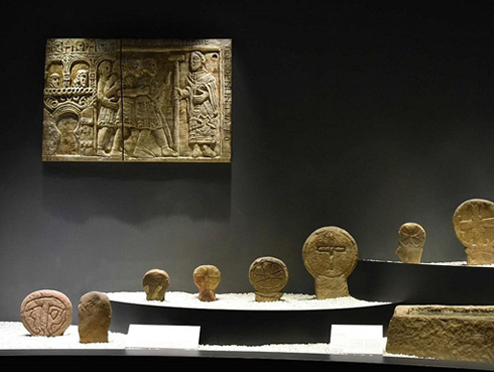
The Museum of Prehistory
The Museum of Prehistory and Archaeology is located in a modern exhibition space of 2,000m2 in the city center, specifically in the Mercado del Este of Santander Prehistory Museum (c/Bailén s/n). The building dates back to 1839-1842, designed by A. Zabaleta, and was declared a Property of Cultural Interest (Bien de Interés Cultural) in 1986. In the land of large cavities with cave art, the Museum of Prehistory and Archaeology of Cantabria houses the material remains from renowned archaeological sites such as La Garma, El Castillo, and Altamira. Stone tools and, above all, portable art made from bone and antler represent the museum’s heritage, making it a reference among European museums for its quality and abundance.
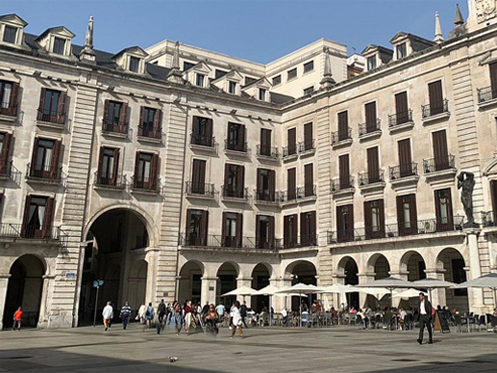
Plaza Porticada
The Plaza Porticada and Plaza del Príncipe are the gateway to the expansion of Santander. This area was spared from the 1941 fire and is now the part we could consider the old town, although not as ancient as in other Spanish cities. From here, you can explore streets like Calle del Medio, Arrabal, or Río de la Pila, which are filled with small, traditional bars and restaurants.
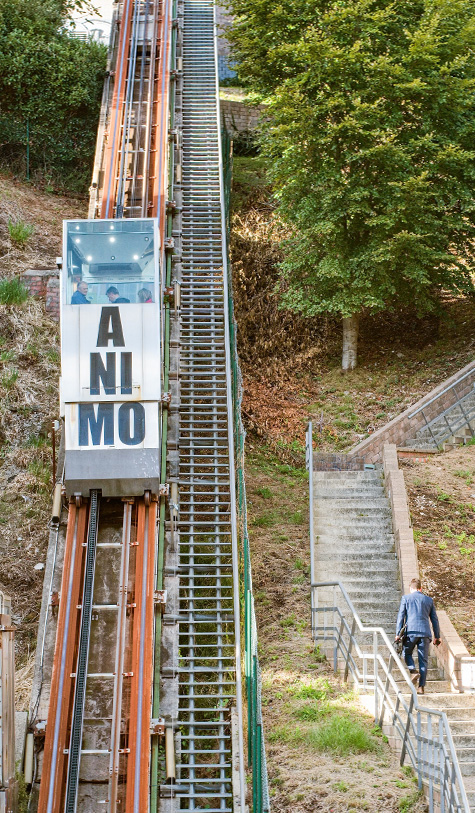
Funicular
Going up the street to the end of Río de la Pila, taking the funicular, we can enjoy a magnificent view of the city. The rooftops give way to the bay, always a protagonist of the city’s views.
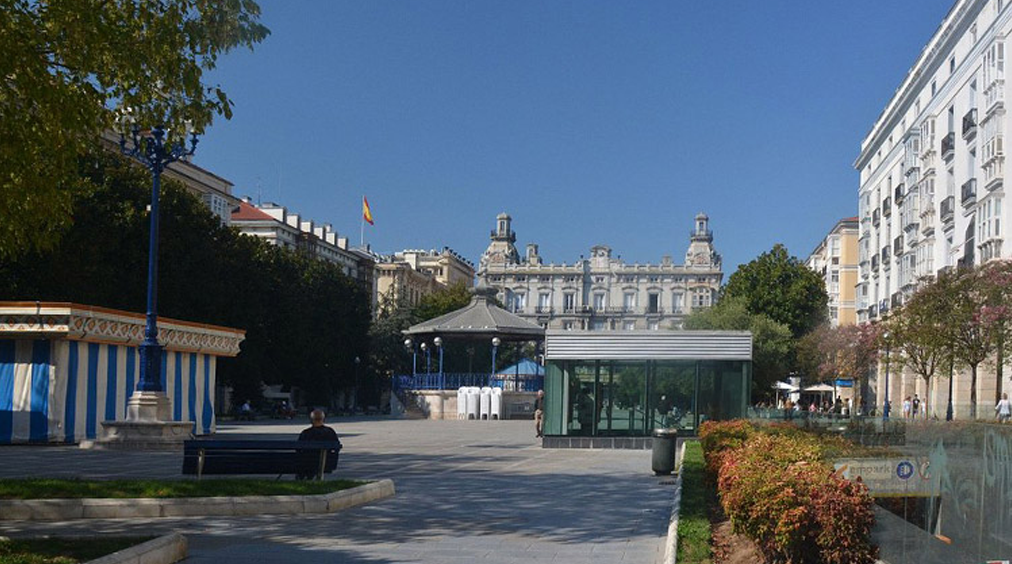
Plaza Pombo
Next, we will arrive at Plaza Pombo, where our Bed and Breakfast Plaza Pombo B&B is located. This square pays tribute to Juan Pombo, who revolutionized the urbanization of the current central area of Santander, the former East Zone.
From Calle del Martillo, he designed with significant constructions what is popularly known as “Plazuela de Pombo,” and he donated the land to the people of Santander with the condition that it would never be built upon. In this small square, he located the palace-building of his ownership, which is now the headquarters of the Real Club de Regatas de Santander and other establishments. In addition to this palace, in 1861, he began the construction of two blocks, each with two houses. He also built another house on Calle de la Marina in 1877. In the vicinity of the small square, he made a significant contribution to the construction of the church of Santa Lucía, and later, he participated in the construction of the Chapel of San Roque.

Plaza Cañadio
Very close by is Cañadio Square. It’s currently the epicenter of the city’s nightlife. In the 18th century, it was a marsh where wild reeds emerged. Hence its name “Cañadío,” where the residents of Santander used to come to hunt birds, as there was a large number of waterfowl nesting in the wetland. The history of Cañadío is as rich and long as that of the city itself. Before the land reclamation in the 19th century to expand the city, the sea used to reach this central square. In this area, there was a shipyard where frigates were built for the 1796 brewery of the Count of Campogiro, who exported their products on ships with romantic names like “El cervecero de Cañadío” (The Brewer of Cañadío).
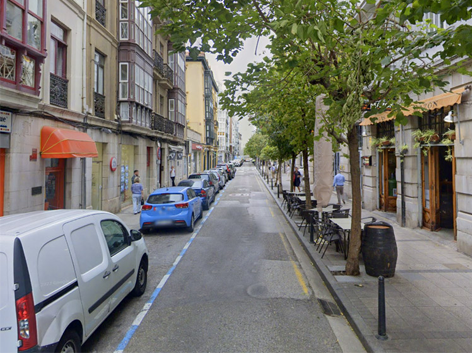
Calle Hernan Cortés
Continuing our way towards Puertochico, we pass through Hernán Cortés Street. Nowadays, it has become one of the city’s most thriving commercial streets, sharing space with new bars and restaurants offering a diverse and interesting gastronomic experience. Parallel to it, you’ll find the famous Peña Herbosa, filled with bars, taverns, and restaurants that cater to all tastes.
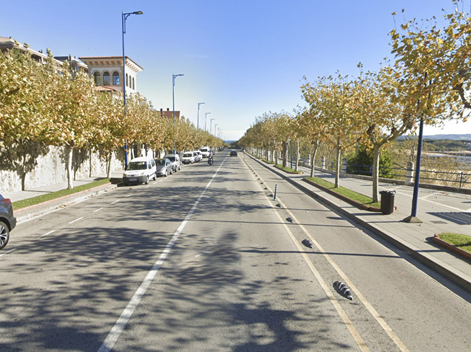
Avenida Reina Victoria
This promenade, dating back to 1911, is undoubtedly the most beautiful one in Santander. It runs along the sea, from the Palacio de Festivales to El Sardinero, passing by the beaches of Los Peligros, La Magdalena, El Camello, La Concha, and the Primera del Sardinero. It’s a long promenade frequently used by the people of Santander for a bit of exercise while enjoying the views along the way. In addition to the golden sandy beaches, you can find interesting and iconic spots along its course. Here are some of them:
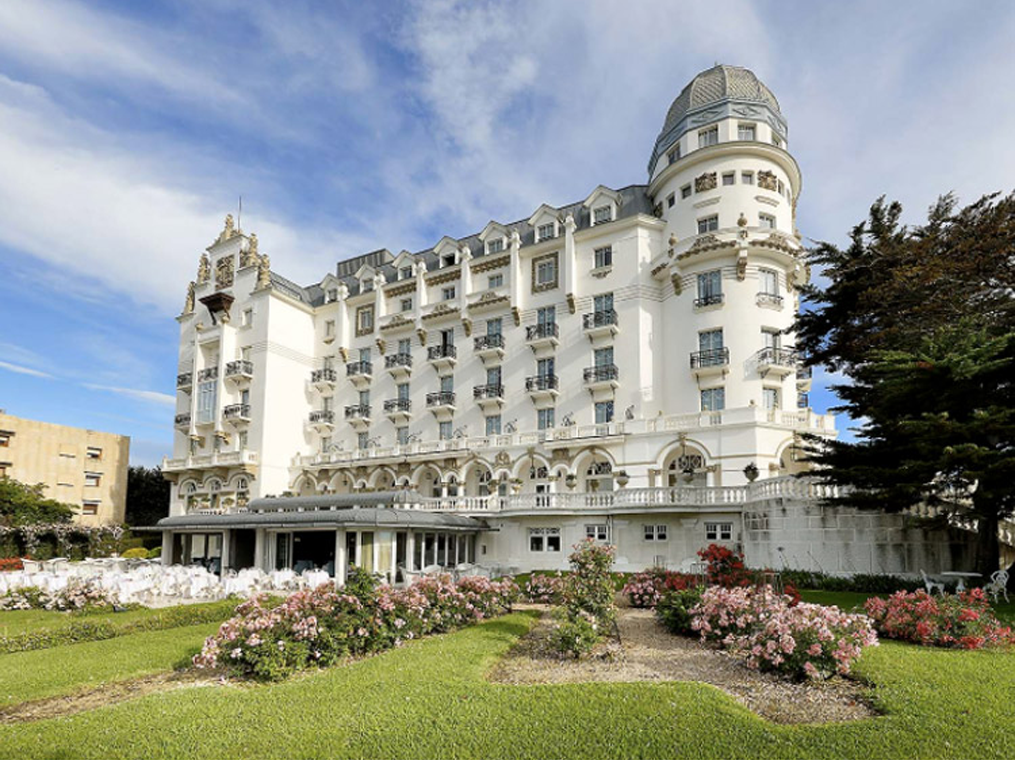
Hotel Real
It was built to accommodate the entourage of King Alfonso XIII and Queen Victoria Eugenia of Battenberg, who had chosen Santander as their summer residence. The Hotel Real was inaugurated on July 12, 1917, with a grand celebration.
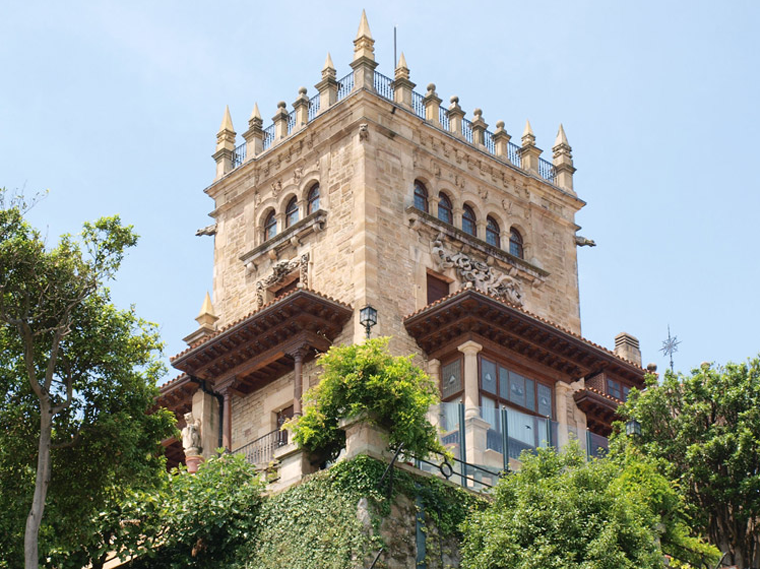
The palace house "El Promontorio"
Property of the Botín Foundation, the former residence of the Botín family, founders of the Banco de Santander. Designed in the “regionalist montañés” style by the architect Javier González de Riancho, it was built between 1915 and 1918.
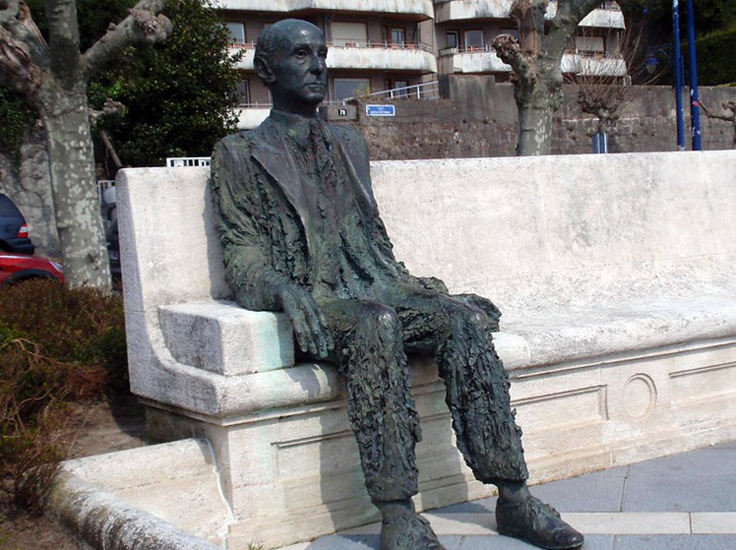
Sculpture of Gerardo Diego
Throughout the promenade, we can discover several sculptures, among which we highlight: Gerardo Diego Cendoya was a Spanish poet, professor, and writer belonging to the so-called Generation of ’27. He represented the ideal of ’27 by skillfully alternating between traditional and avant-garde poetry, the latter within ultraism, and especially creationism, of which he became one of the leading exponents during the 1920s. His poetic work, therefore, follows these two lines. He also expressed his belief that there were two types of poetry: the relative and the absolute.
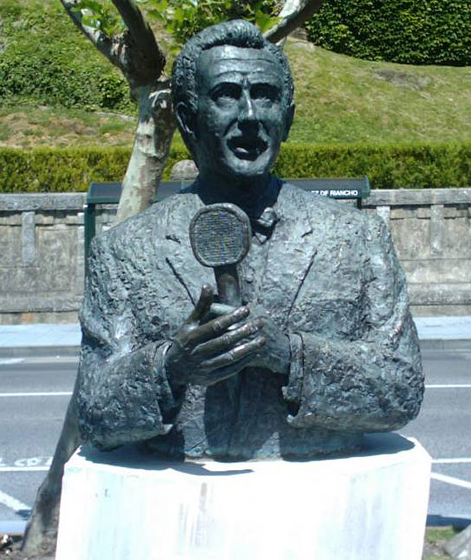
Jorge Sepúlveda
Stage name of Luis Sancho Monleón. This singer, born in Valencia, began recording albums, and his songs became popular through radio, on highly listened-to programs of dedicated songs in the 1940s and 1950s when the fashionable orchestras and artists performed live. His two great hits were “Mirando al mar,” written by César de Haro and Mariano García González, and the famous bolero “Santander,” of which he was a co-author alongside Enrique Peiró. The city of Santander pays tribute to him with this bust, “looking at the sea,” just as he sang about it in his day.
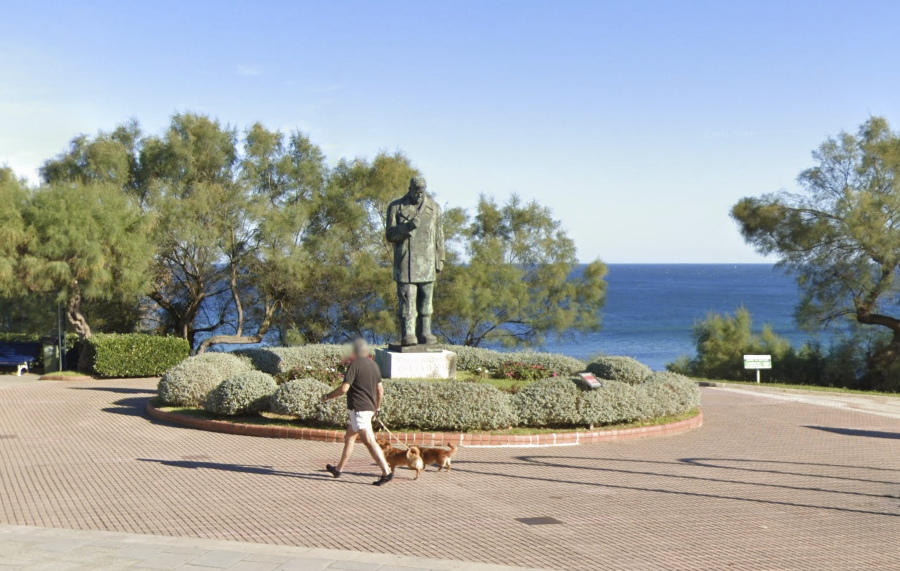
Sculpture of José Hierro
The sculpture dedicated to José Hierro, which the City Council of Santander has installed, is now located on the city’s waterfront, “looking at the sea as Hierro wanted and felt,” thus contributing to “perpetuate the love” between the poet and the city where he spent his childhood and “with which he sought to live until his last moments.” The sculpture was created by Gema Soldevilla.
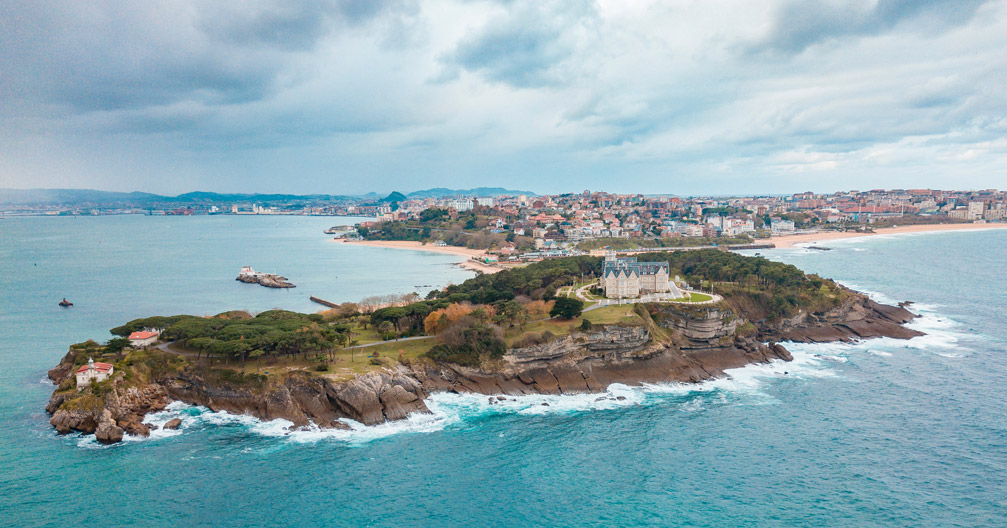
The Magdalena Peninsula
The Magdalena Peninsula has been a historically significant location in Santander, given its strategic position controlling access to Santander Bay and the city. There are even archaeological remains dating back to Roman times after the 1st century, attesting to its historical importance. It was also under military control for a significant period. The Cerda Battery and the San Salvador de Hano Castle, which were essential parts of Santander’s coastal defense system, were located on the peninsula.
During the Peninsular War (Guerra de la Independencia) in July 1812, the British, who were allies of the Spanish, captured Mouro Island from the French and used it to fire upon the defenses taken by the French, eventually driving them out.
The Magdalena Peninsula was later returned to the city, and the municipal government constructed the palace as a summer residence for Alfonso XIII between 1909 and 1911 through a public subscription. It now serves as the current venue for the summer courses of the Menéndez Pelayo International University (UIMP).
The peninsula features the Magdalena Beach (near Los Peligros Beach), the Bikini Beach, a monument to Félix Rodríguez de la Fuente, three caravels from the Naval Museum, which were used by Cantabrian navigator Vital Alsar to commemorate Francisco de Orellana’s voyage in the Pacific Ocean, and a small free zoo where visitors can see ducks, penguins, sea lions, and seals.
Historically, the peninsula lacked trees, but when it became the property of Alfonso XIII, he had it reforested with maritime pine. The peninsula hosts various events throughout the year, such as equestrian competitions, Cantabria Children’s Day (the first Sunday in June), as well as music and sports events. It was also the former location of the Real Santander Foot-ball Club.
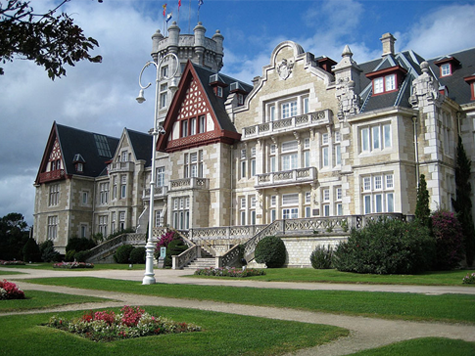
Palace of Magdalena
This building, designed by architects Javier González Riancho and Gonzalo Bringas Vega, is located on the site where the old fort of San Salvador de Hano once stood, guarding the entrance to the bay. It cost 700,000 pesetas in 1912 and was funded by the city council and a large number of local families who contributed through a laborious form of patronage. For example, the Society El Sardinero donated 100,000 pesetas, and the Botín family contributed 1,000 pesetas. Financial difficulties in funding the project led the Executive Committee to even purchase Christmas lottery tickets in hopes of good fortune, but without success. The building was furnished in 1913 and immediately became the summer residence of King Alfonso XIII and his family. They regularly occupied it until the proclamation of the Second Republic. In 1914, the stables were designed by González Riancho, resembling a medieval English village with pointed roofs, prominent gables, exposed wooden frameworks, and more.
En 1977 Juan de Borbón vendió el edificio a la ciudad por 150 millones de pesetas. En 1982 fue declarado monumento histórico-artístico. Entre 1993 y 1995 fue rehabilitado por el Ayuntamiento de Santander y la Universidad Internacional Menéndez Pelayo, que hizo frente a los intereses del préstamo, según proyecto de Luis de la Fuente.
En la actualidad es considerado uno de los edificios más emblemáticos de Santander y es uno de los principales enclaves turísticos de la ciudad.
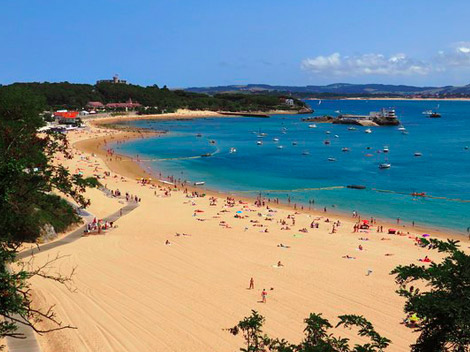
Peligros, Magdalena and Bikinis
These three beaches are located within the bay. They face south, and their waters are very calm and safe since they are inside the bay.
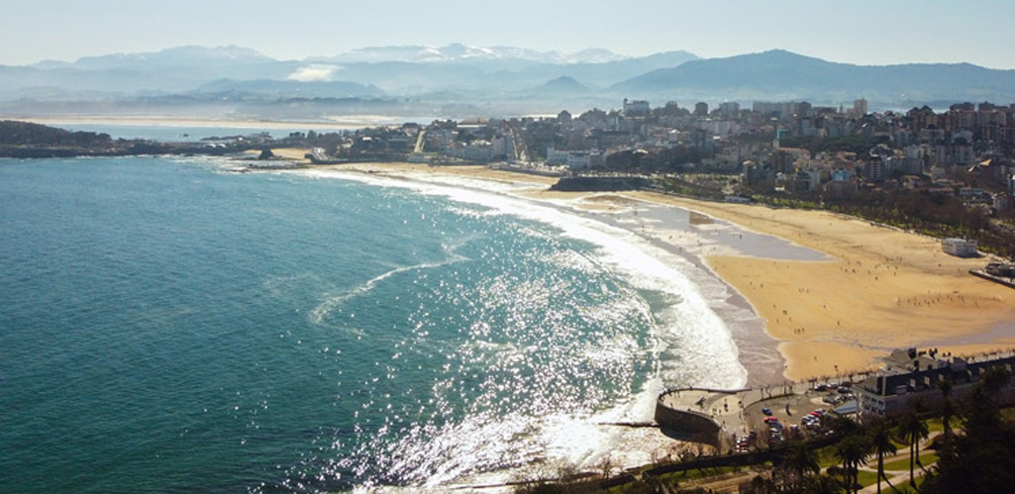
The beaches
You can’t talk about Santander without mentioning its beaches. The city is surrounded by large sandy beaches with fine golden sand. In the summer, they are filled with locals and tourists who take advantage of their proximity to sunbathe or swim. The water temperature varies from 13ºC in winter to 23ºC or 24ºC in summer. They are ideal for practicing water sports such as surfing, windsurfing, kayaking, dinghy sailing, or diving, among others.
A typical sight is seeing groups of paddle players practicing this sport on Camello Beach or the First Beach of El Sardinero. In the game of paddle, the ball is played in continuous flight from paddle to paddle, keeping it in the air for as long as possible without touching the ground. It is played by pairs or one against two. In this game, there are no winners or losers. It’s all about enjoying the game. A player throws the ball to another player, quickly and with maximum accuracy, and the latter must receive and return it gently and equally accurately. The ball can reach speeds of up to 130 kilometers per hour. It’s a game of strength, reflexes, skill, and sportsmanship. We can group the beaches by their location.
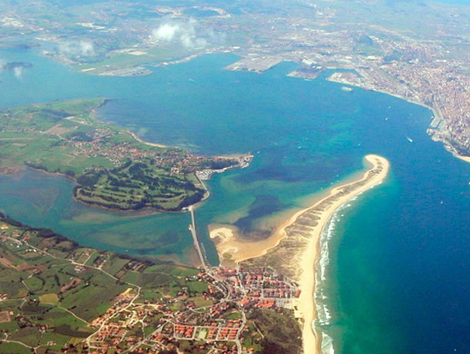
El Puntal
This immense sandy beach is located on the other side of the bay. It connects to the beaches of Somo and Loredo, covering a total length of 7 km. To get there from the city, I recommend using the boat service that crosses the bay. In addition to enjoying a boat ride and admiring the beauty of the city from the bay, you will arrive at Puntal Beach in just 15 minutes. Even if many people visit, you will always find enough space to place your towel and umbrella.
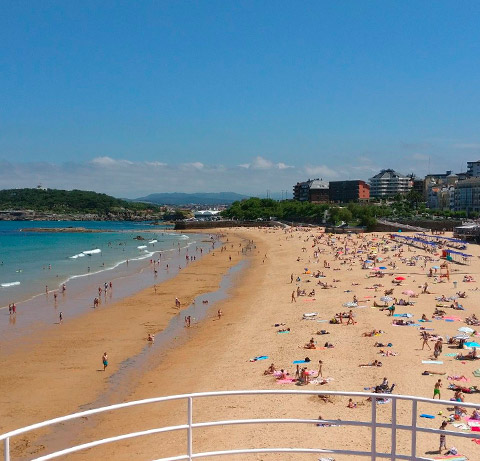
Camello, Concha, Primera, and Second of Sardinero, Molinucos, and Mataleñas
These beaches face east, have open waters, and can be more dangerous when there is a strong swell. Many people have drowned due to not respecting the warning flags from lifeguards. Parking at these beaches can be challenging during the summer. It’s best to take a stroll to reach them, use public transportation, or rent bicycles available throughout the city.
Como curiosidad, en la playa del Camello, una roca con caprichosa forma de Dromedario, le da nombre a la ensenada.

El Puntal
This immense sandy beach is located on the other side of the bay. It connects to the beaches of Somo and Loredo, covering a total length of 7 km. To get there from the city, I recommend using the boat service that crosses the bay. In addition to enjoying a boat ride and admiring the beauty of the city from the bay, you will arrive at Puntal Beach in just 15 minutes. Even if many people visit, you will always find enough space to place your towel and umbrella.

Camello, Concha, Primera, and Second of Sardinero, Molinucos, and Mataleñas
These beaches face east, have open waters, and can be more dangerous when there is a strong swell. Many people have drowned due to not respecting the warning flags from lifeguards. Parking at these beaches can be challenging during the summer. It’s best to take a stroll to reach them, use public transportation, or rent bicycles available throughout the city.
Como curiosidad, en la playa del Camello, una roca con caprichosa forma de Dromedario, le da nombre a la ensenada.
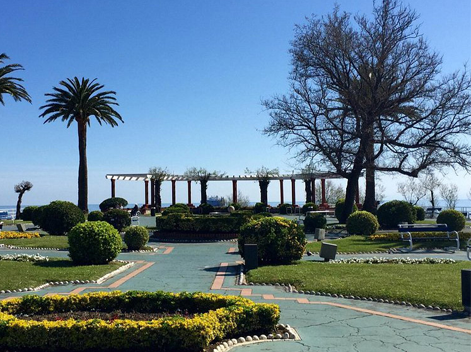
Gardens of Piquio
These gardens divide Sardinero Beach in such a way that they are popularly referred to as the First and Second Beach. The Piquío meadow was adapted for public use around 1925 when the renovation of this area of El Sardinero began, led by the municipal architect Ramiro Sainz Martínez. Piquío has undergone successive transformations, and after the Spanish Civil War, the land was developed into gardens.
Uno de los tesoros escondidos en estos Jardines de Piquío es un potente instrumento astronómico llamado Tierra Paralela. MIrando esta bola del mundo y debido a su especial orientación een el espacio, podréis ver amanecer en Nueva York… anochecer en Tokio… o la noche polar de 6 meses…
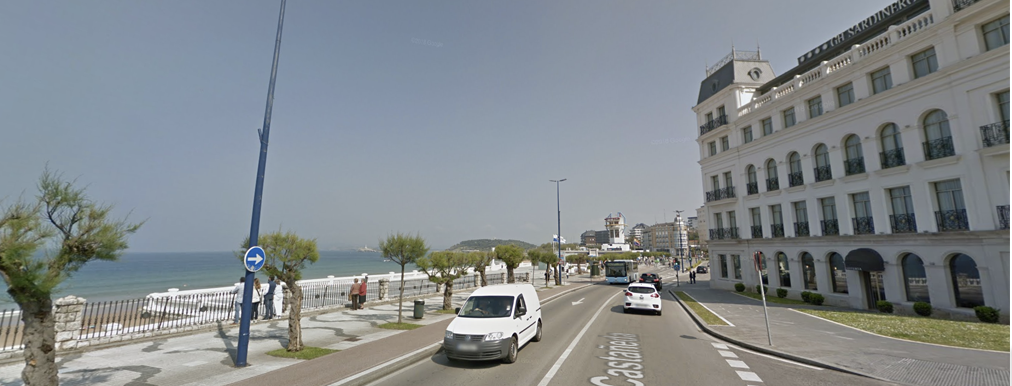
El Sardinero
Sardinero is a neighborhood and tourist enclave in the city of Santander known for its extensive beaches and for being one of the most exclusive areas in the city.
In a broader sense, Sardinero refers to the coastal area between the Magdalena Peninsula and the Mataleñas area, forming the bay that bears its name. In a stricter sense, the central area of this region would be the Italy Square and its surroundings. It owes its name to the fact that in the past, there was a sardine fishing ground in front of its beaches.
Sardinero started gaining fame and becoming a popular destination from the mid-19th century, especially in the early 20th century. The trend of summer vacations and the health benefits of sea bathing attracted many visitors from the Castilian bourgeoisie to this area. Gradually, Sardinero transformed from being a place primarily visited by the locals of Santander into a spa town with all the services to cater to an affluent society drawn by the economic boom of Santander, driven by trade with the Spanish colonies.
Based on the historical and functional evolution of this area, two urban morphologies can be distinguished: one consisting of the chalets and palaces built from the late 19th century, and the other consisting of the modern apartment buildings, both primary and secondary residences, built in recent decades.
The bustling Sardinero of the summer is quite different from the peaceful winter atmosphere. In any case, as the song goes, “a stroll in Sardinero, there’s nothing like it in the whole world.”
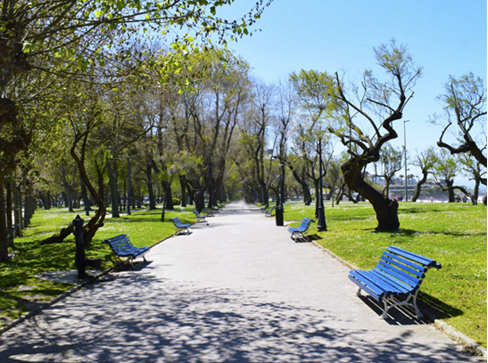
Park of Mesones
The “Parque de Mesones” is dedicated to honoring Mayor Doctor González Mesones and is located in a spacious, tree-filled green area in El Sardinero near the Second Beach of Sardinero in Santander. The park covers an area of 32,628 square meters, with an additional 19,029 square meters added later, creating a green area of over five hectares. It was inaugurated in 1955 and was built in the years preceding its opening, on the dunes that are still preserved behind the Second Beach of Sardinero. This park provides a beautiful green space for people to enjoy in the city.
Park of "las Llamas"
Officially known as the “Parque Atlántico de Las Llamas,” this urban park spans 11 hectares and is located in the city of Santander. The first phase of this green space was opened to the public on May 11, 2007, with an additional 426,000 square meters yet to be developed, extending almost to the limits of La Albericia. When completed, it will be the park with the most trees in the city of Santander, offering a significant green area for the residents and visitors to enjoy.
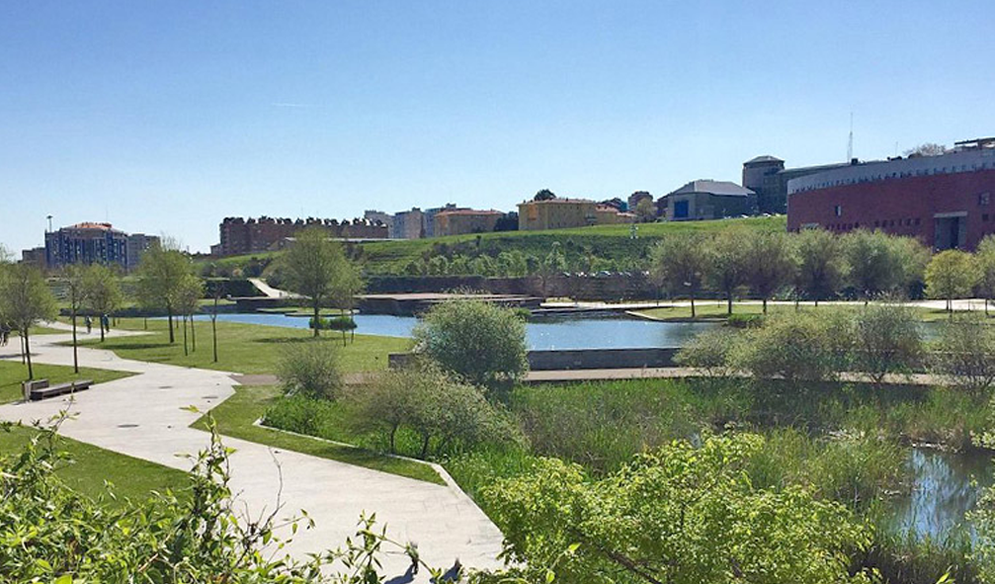
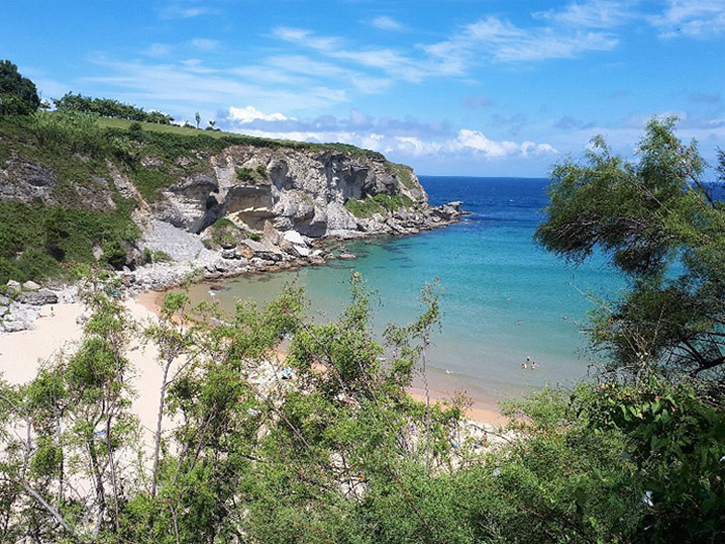
Mataleñas
A beautiful coastal walk from the end of the Second Sardinero Beach to the Cabo Mayor Lighthouse consists of following the Mataleñas Path. This trail runs around the Mataleñas estate, which is now a municipal golf course located at Cabo Menor. From there, a long flight of stairs leads the walker to Mataleñas Beach, which is typically less crowded due to the effort required to descend the stairs. This walk offers picturesque views and a serene beach environment.
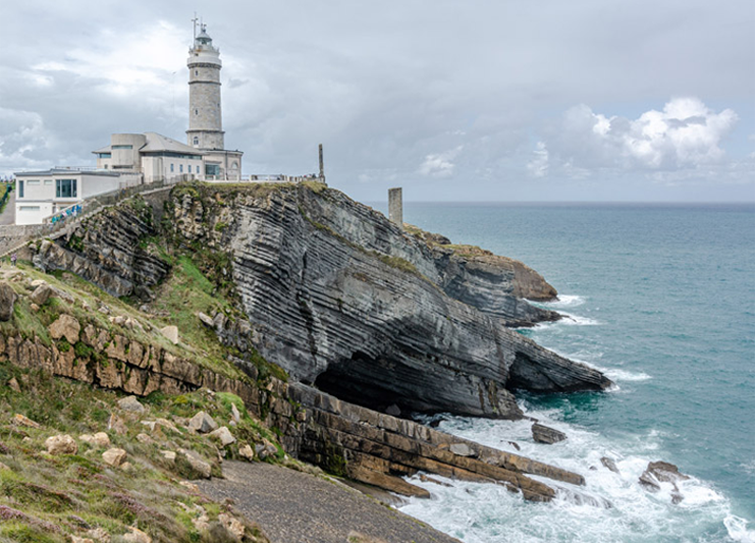
The Cabo Mayor Lighthouse
At the top of the ascent to the lighthouse, visitors can enjoy the best views of the Santander cityscape. From this vantage point, you can distinguish various landmarks, including Mataleñas, Sardinero, the Magdalena Peninsula, Mouro Island, the entrance to the Bay of Santander, the Hotel Real, and the surrounding mountains such as Peñacabarga. On clear days with a northeasterly wind, you might even see the Picos de Europa mountain range.
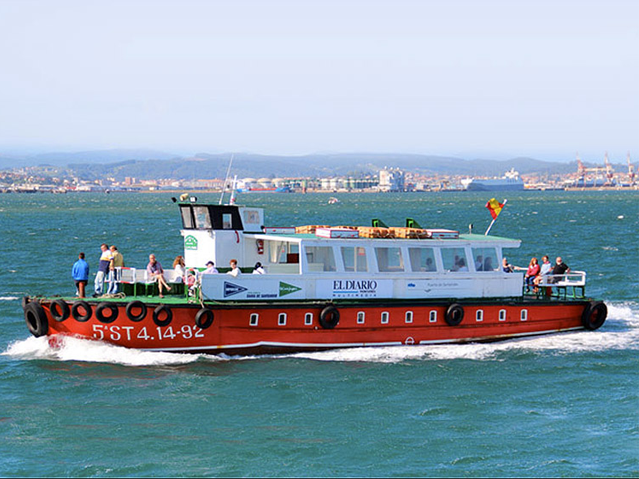
Crossing the Bay
We have already talked about the ferry service that takes you to the beaches of El Puntal. The same service, from the pier next to the Jardines de Pereda, can take you to the towns of Pedreña and Somo.
Pedreña is a town that became globally known as the birthplace of the greatest golf player of all time, Severiano Ballesteros. Seve’s list of achievements includes 2 Masters of Augusta, 3 British Opens, and 5 Ryder Cups, among others. It is a small fishing village where you can enjoy excellent sardines or a good northern bonito in one of its busy grills.
Somo is a small village that has developed around the beach of the same name. Its population multiplies exponentially in the summer months. The best part of this journey is undoubtedly the boat ride, enjoying the views of the city of Santander, its bay, its mild climate, and the peace and tranquility that the privileged surroundings of this city offer to all visitors with open arms.
We hope this little guide helps you get to know Santander better, its corners, its walks, its secrets, its beaches, and its bay. Welcome.



